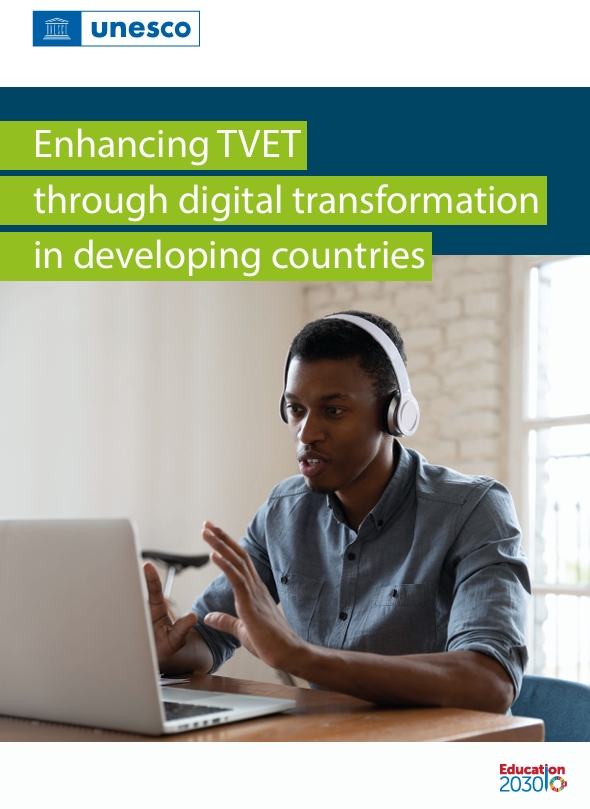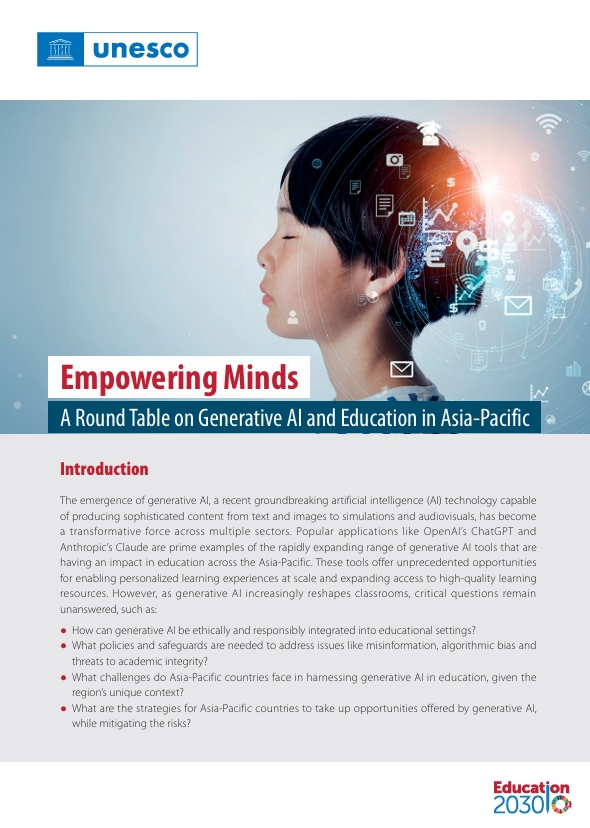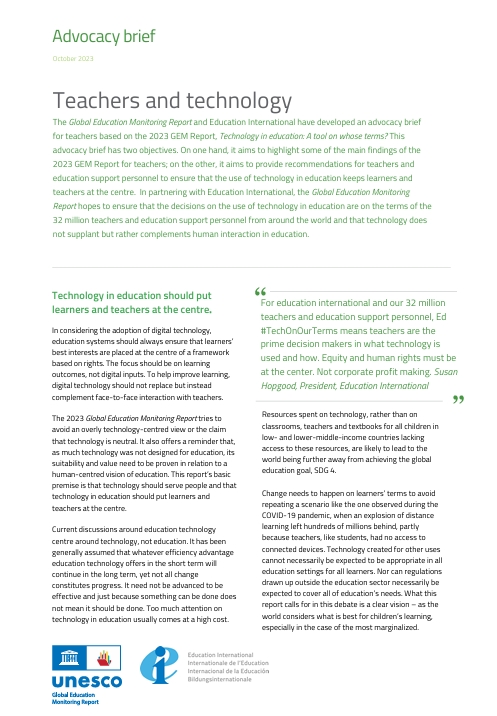Technological advancements and digitalization are profoundly reshaping our work and lifestyle, business models and operations, and government policy choices. While these advancements have brought strong economic dividends and efficiency and productivity gains in a wide range of areas, from agriculture to health, infrastructure, environment, and education (see International Labour Organization [ILO], 2021b; UNESCO, 2018; World Bank, 2016), digital transformation's uneven expansion across countries can lead to unequal employment effects across areas at different stages of development and technology adoption, creating digital divides within and between countries (ILO, 2021a; UNESCO, 2022b). In the absence of proactive policies, the digital technological gap between the most advanced and the least advanced countries is likely to grow.
In addition, most experts agree that activities with the highest automation potential—and hence the highest potential to become redundant—are routine-based jobs with predictable physical activities that are concentrated in developing countries, mostly among informal workers, women, and migrant workers (ILO, 2021d). This means that LMICs will disproportionately bear the burden of adjusting employment to technological disruption (Carbonero et al., 2018). Moreover, employees working in the most exposed roles are the least likely to receive any on-the-job training or even to have any prior formal education (Nedelkoska and Quintini, 2018). Thus, even if digitalization creates new work opportunities, specific skill-transition policies will be necessary to mitigate inequality in accessing those opportunities.
The increasing use of digital technologies (especially after the COVID pandemic) is also driving change in the tools and modalities of learning, assessment, and certification, along with career guidance, job matching, and labour-market services (ILO, 2021c). In this context, TVET and skills systems across the globe must respond to the external demand for new skills from our increasingly digital society and enterprises. As they do so—and much like any other sector—they themselves must engage in digital transformation and respond to the challenges it presents to their institutions, staff, and learners (ILO, 2021c). The design and implementation of TVET policies, the forecasting of supply and demand for skilled workers, and the updating of TVET certification systems, curriculum design, and delivery are all greatly influenced by the digital transformation of TVET, which this document refers to throughout as digital transformation in TVET.
Overcoming challenges posed by rapid global technological developments, worldwide increases in youth unemployment, and the growing demand for green skills are key imperatives for the education and skill-development sector if the goals in the 2020 Agenda for Sustainable Development and the Education 2030 Agenda are to be realized. To achieve these goals, as promoted by the UNESCO 2022-2029 Strategy for TVET, teaching institutions have three key priorities: develop skills for all individuals to learn, work, and live; develop skills for inclusive and sustainable economies; and develop skills for inclusive and peaceful societies.
This document contributes to these important discussions by exploring the context, trends, and challenges inherent to digital transformation in TVET in different LMICs, focusing on national policy-makers and regional or institutional practitioners. The main research question of the study is as follows: "How can TVET systems be enhanced through digital transformation in TVET in low- and middle-income countries?"
The research was conducted over a four-month period, ending in early 2023. It comprised an initial exploratory literature review to provide a basis for the case studies and conceptual framing, followed by a set of five LMIC country case studies (Brazil, India, Jamaica, Kenya, and Tunisia), selected to provide broad insights into digital transformation in TVET in the following areas:






